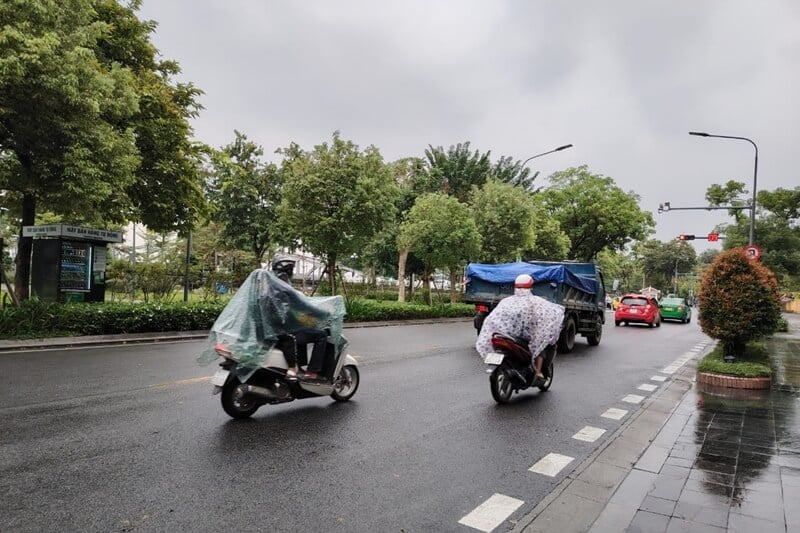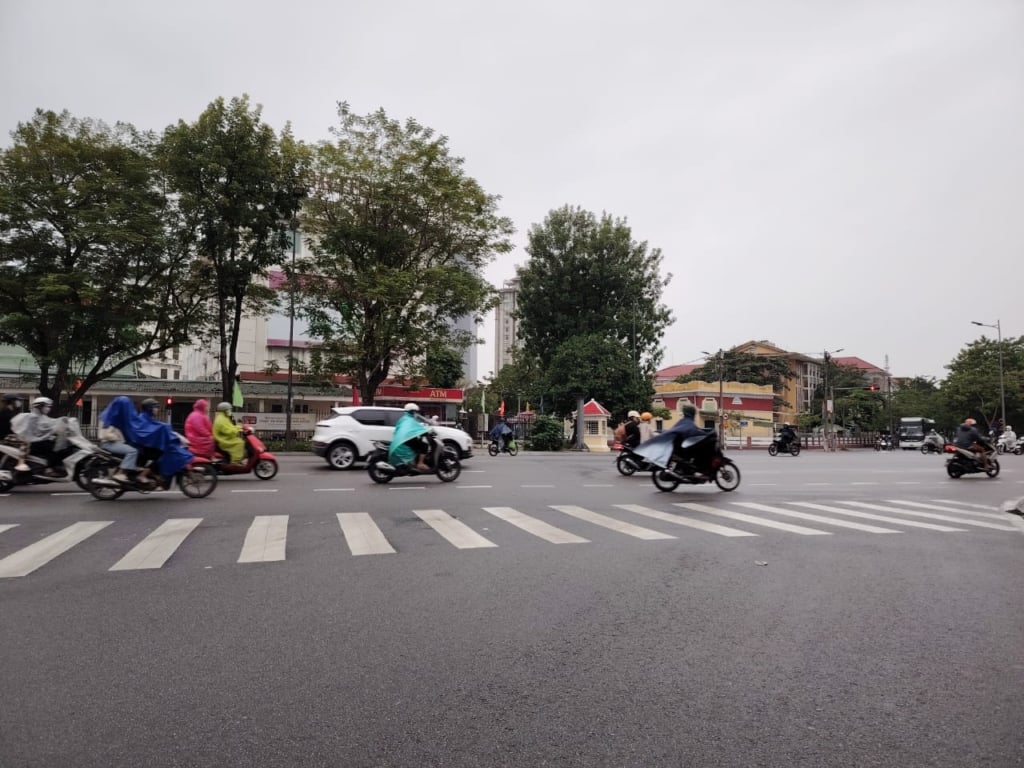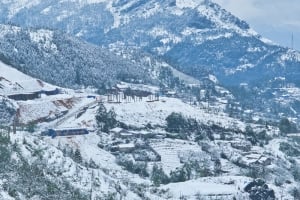Vietnam is located in the intrinsic region of the Northern Hemisphere, so the influence of wind in this region operates year-round.
On the other hand, Vietnam’s climate strongly affects seasonal air masses, with two main monsoon seasons: the northeast winter monsoon from November to April and the southwest from May to the end of September.
1. What are the monsoon seasons in Vietnam?
The monsoons happen in various country regions during seasons because the land is long.
1.1. Winter monsoon:
The winter monsoon has operation time from November to April next year, moving in the northeast direction, called the northeast monsoon.
The scope of the northeast monsoon comes from North Vietnam to Bach Ma Range in Hue City. The weather is cold and dry in the first half of winter, bringing a cold and prolonged winter in the North. The second half of the winter season is cold and humid, with drizzle rain in the coastal areas and the North and Central plains.
Moving to the South, the wind weakens, becomes less cold, and almost stops in the Bach Ma range. Thus, from Da Nang onwards, staying on the south side of Hai Van Pass, the temperature is warmer, although the wind still blows strongly from the Northeast, dominating and causing rain for the Central Coast, including Danang City.
At the same time, South Vietnam and the Central Highlands have dry seasons.
>> Do you want to know about snow in Vietnam?
1.2. Summer monsoon:
The summer monsoon season lasts from May to October, and two winds blow in the same southwest direction.
The first half of summer (May – July): With the scope of the southwest monsoon, the tropical mass of the Bay of Bengal moves southwest and penetrates directly into Vietnam, causing heavy rains in the Southern Delta and Central Highlands.
After that, this air mass crosses the Truong Son range, causing a dry and hot effect in the coastal plains in the central and southern parts of the Northwest region.
Mid- and late summer (June – September): The southwest monsoon (from near-tropical high pressure in the southern hemisphere) operates. The air crossing the equatorial sea becomes hot and humid, and this air causes heavy rain for the wind-receiving area in the South and the Central Highlands of Vietnam.
Due to the low pressure in the North, this atmospheric mass moves from the Southeast to the North, creating a lot of rain in late summer in North Vietnam.
1.3. The results of the monsoon seasons in Vietnam cause:
- Creation of climatic seasons: The North has a cold winter with little rainfall, and a hot summer is humid and rainy. The South has two distinct rainy and dry seasons.
- There is rain in summer (May-August) between the Central Highlands and the coastal plain of Central Vietnam, and rain in autumn and winter (September-November).
2. Should you travel during the monsoon?
Yes, you should. However, it would be best to notice the monsoon season coming to different regions in Vietnam to make an excellent plan to visit the beautiful country.
Vietnam has an extended land area with different regions and climates. Getting the best time to visit Vietnam from the North to the South isn’t easy. It is because different parts and times in the country will get various monsoon seasons.
Thus, Vietnamdrive will give you general suggestions below to help you choose the regions you should explore in Vietnam.
- North Vietnam, including Hanoi, Halong Bay, Sapa, and Ninh Binh, is good to visit in the autumn from the end of September to the end of November. There is not much rain there, and the north wind of the winter monsoon has not come yet.
- South Vietnam, covering HCMC, Mekong Delta, and Nha Trang, is perfect for staying from February to April. During that time, you can avoid the summer monsoon from the southwest.
- From February to April, you can visit Central Vietnam, such as Danang, Hoi An, Hue, and Phong Nha, at the same time as South Vietnam.
- Central Highlands, including Dalat, Kon Tum, and Pleiku, will be a nice destination for a self-guided tour from September to April when the southwest monsoon stops influencing this area.
>>> Please see the different regions on the map in Vietnam.
3. What should you prepare for when traveling to Vietnam during the monsoon season?
The country offers many surprises, such as a diverse culture, great food, beautiful landscapes, and typical weather. It can suddenly rain at any time during the monsoon season in the regions it comes from.
So, when you go out during the monsoon in Vietnam’s southern and central cities, you should wear a raincoat or an umbrella, although it may be sunny.
Besides, having a warm coat during the monsoon season in North Vietnam would be best because the cold temperature and strong wind can make you feel colder than usual. The cold wind is undoubtedly different from the snow cold in other countries.




